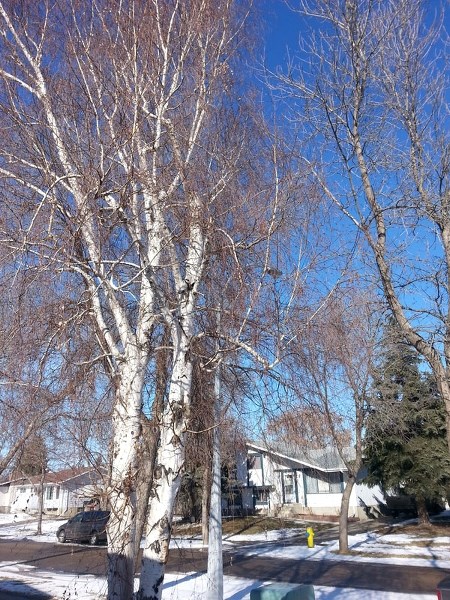Would you be surprised to hear that now – early March, when there’s still snow on the ground – is a good time for pruning your trees and/or shrubs?
Gardening experts say it’s a very good time, especially since we’ve had a mild winter with very little snow. Before spring leaves make a visual inspection more difficult, now is the time to examine the still bare branches and trunks for splits, cracks, fallen limbs or disease.
It's a bold idea for many homeowners, who tend to shy away from pruning at any time of year, according to Jim Hole, certified arborist and co-owner of Hole’s Greenhouses and Gardens at The Enjoy Centre. He said fear – a concern with killing a beloved tree, shrub or plant – is the number one barrier that comes between a homeowner and their pruning saw, and it’s a fear without cause, Hole said.
“In reality, more trees are killed as a result of NOT pruning, from wind that takes down gangly limbs and can cause a split. People need to hear that it’s OK to prune – even necessary. There’s a lot of question about how and why to cut, so we want to give folks information and the confidence to take it on,” said Hole, who is offering free seminars later this month, geared to both experienced pruners and those who’ve never touched a pruning saw or shears before.
Using a real tree for hands-on demonstration on where to make clean pruning cuts, (bad cuts – ragged or in the wrong place, can jeopardize tree health) Hole said he hopes homeowners will walk away with an understanding that pruning is preventive for tree health and maintenance.
“When it’s a hazard, like a tree growing over a playground or up into power lines, people understand the need to prune. We’ll expand on that, looking at what a homeowner’s goal is for a tree or shrub,” he said. “Do you want a fruit tree to provide a maximum number of apples, pears, etc. or are you after a pyramid-shaped, pleasing-to-the-eye specimen? Or a bit of both?”
Hole said shade trees are usually pruned for structure and aesthetics, while with fruit trees, it’s about both strength and fruit production.
“People can do a lot themselves with low-level branches, but once you have to climb up into a tree, it’s best to leave branch removal and shaping to a professional – there’s a lot of injuries with homeowners taking on jobs that are too big. If you need a ladder, that’s already a two-person job. We’ll talk about what people can and should take on at the workshop,” he said.
For jobs that people can do themselves, Hole said there’s only one main tool that is needed: a good quality pruning saw with a curved blade and teeth. “It’s the one basic saw everyone should have, and will tackle 95 per cent of pruning jobs. It cuts large branches with ease – some even fold up,” he said, also pointing to loppers and pruners for smaller jobs.
Though experts agree it takes a lot to kill a tree – hardy lilacs, for example, can be severely pruned down to practically nothing and still come back – there are general rules of thumb about when to prune. For spring or summer flowering trees and shrubs, prune right after flowering so as not to affect the next year’s blooms. Trees and shrubs like roses that flower in mid-late summer should be pruned in winter or early spring.
The Arbor Day Foundation says that light pruning and removal of dead wood can be done at any time of year, and that over all, the instinct to prune during dormant winter months is a good one. Doug Burton, owner of tree removal and pruning company Ace of Trees, said other than birch, any time is a fine time to prune.
“Very early spring, especially with this year’s lack of snow, is great. We want to see the skeleton of the tree before it leafs out,” he said. As demand grows strong during warm weather months –though elm trees are mandated to be addressed before end of March – Burton said sooner is better for homeowners looking to tidy up, diagnose problems and maintain the trees and shrubs on their property.
Did You Know …
A single tree in a yard can increase property value by some nine per cent compared to a home with a barren yard.




